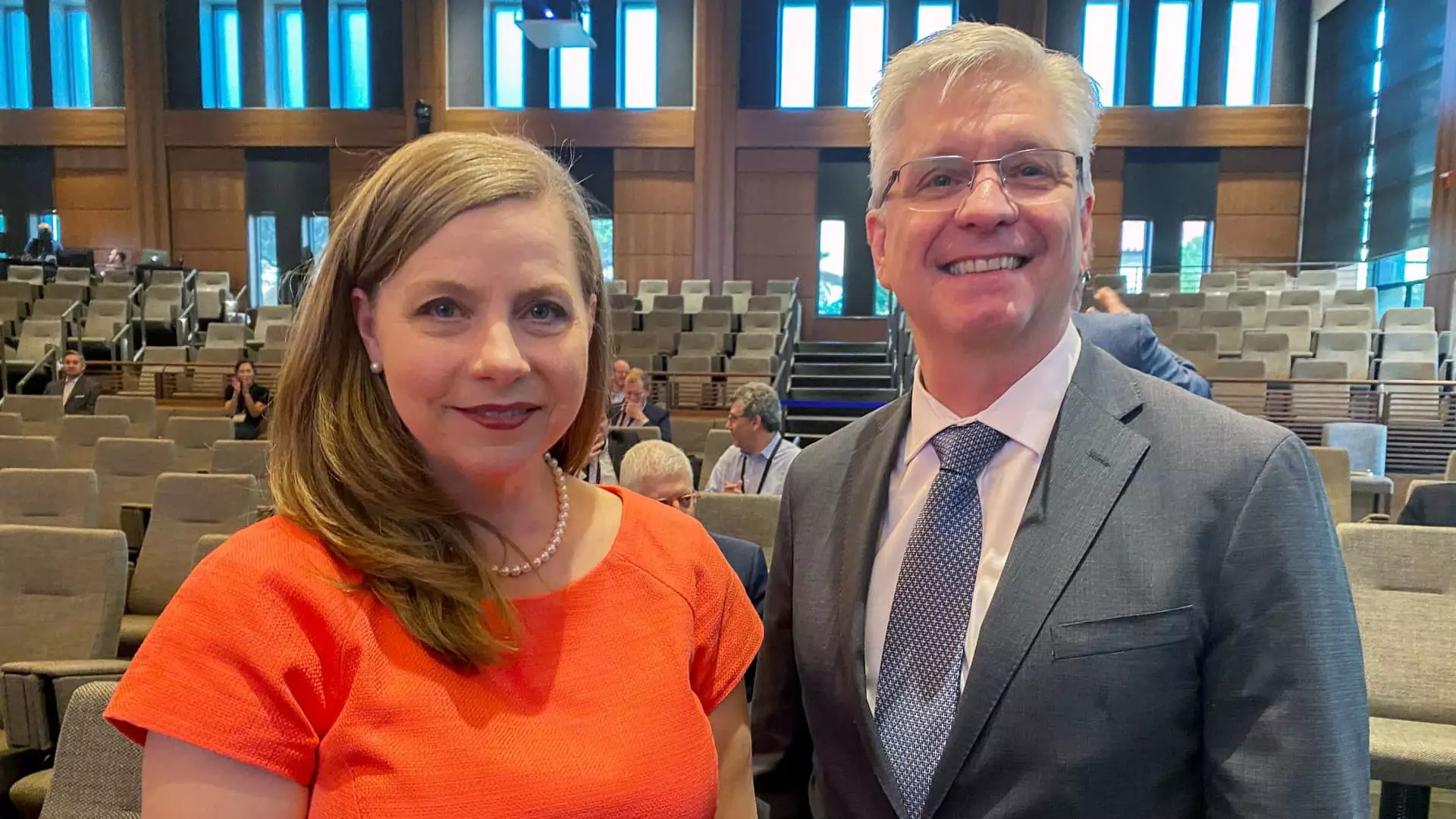The recent announcement regarding the resignation of Michael Barr, the Federal Reserve Vice Chair for Supervision, marks a significant pivot in the regulatory landscape for U.S. banks. This strategic departure is not merely a personal decision; it reverberates throughout the financial sector, especially amidst the backdrop of a politically charged environment that favors a deregulated banking industry. As Barr vacates his position to circumvent a potential drawn-out legal confrontation with the Trump administration, the implications of his exit are manifold, affecting everything from regulatory approaches to the strategic positioning of financial institutions in the coming years.
Michael Barr’s tenure was characterized by a focus on bolstering the capital requirements for American banks, in alignment with international standards outlined by the Basel III framework. His recent announcement to step down 18 months earlier than intended closes a chapter that many predicted could have been contentious. Barr’s resignation was spurred by the likelihood of his dismissal under a Trump-centered agenda bent on deregulation—a scenario that underscores the precarious nature of regulatory positions within the Federal Reserve when political tides shift.
Trump’s electoral victory had initially signaled a shift toward a more lenient regulatory framework for financial institutions, and Barr’s departure aligns seamlessly with these expectations. This transition opens the door for a replacement who is likely to favor policies that resonate more closely with the interests of the banking sector, a point that does not escape the notice of market analysts and professionals alike.
In light of Barr’s resignation, industry insiders are turning their attention to potential successors, primarily Michelle Bowman and Christopher Waller, both of whom are Republican members of the Federal Reserve Board. Bowman’s prior criticisms of Barr’s capital proposals suggest she could champion a regulatory environment that is more accommodating to banks. Her stances indicate an inclination towards facilitating industry growth, potentially prioritizing the flexibility of capital requirements over stringent measures.
Barrage, a former FDIC executive, suggests that Bowman could spearhead reforms addressing several issues, from the opaque nature of the Fed’s stress testing to the arduous process for merger approvals. Indeed, if she were to assume the vice chair of supervision role, it is likely to usher in an era of greater lenience toward practices that banks have long argued are hurdles to robust growth.
The immediate reaction from the stock market following Barr’s announcement illuminates a prevalent optimism among investors. Significant movements in bank stock prices, with indices such as the KBW Bank Index reflecting gains, are a tangible representation of the market’s anticipation of less rigorous regulatory oversight. As banks historically benefit from decreased capital restrictions, the potential for share buybacks and increased dividends could still feed into the larger economic picture, influencing capital markets in significant ways.
The relaxation of proposed capital requirements, which would have necessitated large banks to reserve billions, is a theme that stakeholders are keenly observing as regulatory processes evolve. Analysts are already predicting a less demanding Basel III Endgame under Bowman’s leadership, which is expected to lessen the burden previously envisioned under Barr’s draft proposals.
As Barr maintains his role as a Fed governor, the balance of power within the Federal Reserve may subtly shift without discarding the essential checks and balances provided by Democrat appointments. The current composition ensures a 4-3 majority for Democrats on the Fed board, which could temper extreme regulatory rollback while allowing for smoother transitions in regulatory initiatives.
However, should Bowman take the vice chair role and advocate for industry-friendly reforms, the overarching narrative of loosened regulations could spark debates on financial stability. The tension between fostering an appealing environment for banks and promoting long-term economic stability is bound to intensify, especially in light of historical precedents where deregulation led to detrimental economic consequences.
Michael Barr’s early resignation opens a new chapter for banking regulation in the United States. With potential successors indicating a tilt towards a friendlier regulatory stance, the immediate implications suggest that banks may be poised for growth after years of stringent oversight. The evolving regulatory environment will require vigilant attention from analysts and stakeholders as the newly shaped landscape unfolds amidst political influences and market expectations. Ultimately, the balance between a thriving banking sector and economic stability will be critical moving forward as these changes take shape.

